With eyes wide open: Aerial electronic warfare. Part of 1
Over the past two years, there has been a noticeable increase in the activity of radio intelligence services not only in the Syrian and Iraqi theaters, which would seem logical, but also in the Baltic region, where both opposing sides are closely watching each other.
On April 25, two US Air Force F-35A Lighting-II fighters from the 34 Squadron flew from Leikenhit Air Base in East of England to Amari Air Base in northern Estonia, arriving there at Greenwich GMT. The Air Force statement said: “This flight was planned in advance and is not relevant to current events. This allowed the F-11A fighter aircraft during the training flight to become better acquainted with the European theater of operations and at the same time reassure allies and partners of the US desire to maintain peace and stability in the region. " Distinguished Baltic countries feel uncomfortable from the moment Crimea joined Russia and Moscow’s intervention in the civil war in Ukraine in March 35.
The United States Air Force deployed F-35A fighter jets in Estonia in April; this deployment was accompanied by significant radio intelligence activity
However, the deployment of F-35A aircraft was not the only April event that forced aviation spotters to grab onto photo and video cameras, as evidenced by a huge amount of illustrative material. The arrival of F-35A fighters in Estonia was accompanied by some interesting electronic intelligence (ELINT) activity. Materials compiled by spotters comparing aviation radio bands and tracking air traffic information services indicate that the deployment of F-35A fighters occurred simultaneously with the flights of one American and one British electronic reconnaissance aircraft Boeing RC-135W Rivet Joint / Airseeker and one American RC aircraft. -130U Combat Sent. These platforms perform tasks for the collection, identification, direction finding and analysis of RF sources. According to open sources, the RC-135W aircraft mainly concentrates on collecting radio intelligence data, while the RC-130U mainly collects electronic reconnaissance data, namely signals from radar stations. All three aircraft flew the ring route; two RC-135W aircraft from the north-west of the Kaliningrad region to the north-east of Poland, while the RC-135U flew over Estonia itself near the Russian-Estonian border. F-35A fighters completed their mission in 4 hours and returned to base in Great Britain, RC-135U / W aircraft left the area immediately after them.
The MC-12W radio electronic reconnaissance aircraft of the American Army played an important role in determining the location of IS militants during the hostilities in Mosul
Baltic intrigue
Neither the US nor the British Air Force reported anything about the flights of these RC-135U / W aircraft, which is not surprising. The goal of their deployment could be twofold. First, the F-35A journey to Estonia became part of the first deployment of this fifth-generation fighter in Europe, which from the very beginning was created with a low effective reflection area. The flight of a fighter with such a level of complexity near Russian territory allowed the US and British Air Forces (which will receive their fighters in the F-35 version at the end of this decade) to collect radio intelligence data on how the Russian integrated air defense system, especially ground-based airborne surveillance radars and radio communication systems as part of this air defense system are responding to the deployment of such aircraft. Secondly, some analysts in the field of air traffic suggest that the deployment of these aircraft was conceived as a precautionary measure - to persuade the Russians not to activate their radars while the F-35A were in Estonia. Some observers noted the fact that all three RC-135U / W aircraft kept their radio frequency transponders ADS-B (Automatic Dependent Surveillance-Broadcast - a broadcast system of automatic dependent surveillance) turned on during the flight, which made it possible to track these aircraft using such services as FlightRadar24. Clear evidence that the United States and British Air Forces wanted their aircraft to be visible. The same observers say that when such aircraft collect radio intelligence data over Iraq and Syria, they usually do not include their ADS-B transponders in order to reduce signs of visibility.
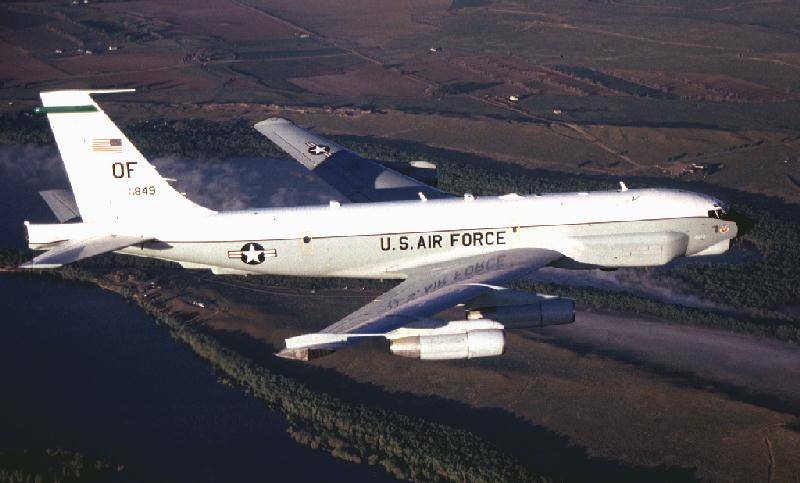
The United States Air Force deployed the RC-135U aircraft to escort F-3SA fighter jets to Estonia. The aircraft can be used to collect information about the Russian radar or work as a deterrent.
Near East
Outside the Baltic, radio intelligence activities are active in the Syrian and Iraqi theaters of war, as the US-led coalition (known as the Combined Joint Task Force-Operation-INHERENT RESOLVE or CJTF-OIR) fights against the Islamic State (IG, banned in the Russian Federation). Again, when tracking current activity, the air traffic information services community plays a big role. For example, in February and March, the Americans were actively searching for the leader of the IG, Abu Bakr Al-Baghdadi, who at the time was hiding in the Iraqi city of Mosul. It was reported that during the battle for Mosul, which began on 16 on October 2016, the Beechcraf Super King Air-300 turboprop transport aircraft with RTR equipment regularly circled. These aircraft hunted for radio signals that could give out the location of Al-Baghdadi. In addition, several interesting quasi-military aircraft were seen in the sky above Mosul. For example, this is a Pilatus PC-12M5 turboprop aircraft with the registration number N56EZ, which is owned by Sierra Nevada Corporation. This company is known for supplying EW / RTR systems for airplanes and reworking them for these tasks. Above Mosul, several Beechcraf MC-12W Project Liberty reconnaissance aircraft of the US Army were also detected, which collected data on tactical and operational RTR, primarily radio channels.
RC-135W airplanes of the British and US Air Forces played an important role in gathering intelligence information on the radio exchange of members of the IG group in Iraq and Syria
As noted above, the use of radio intelligence data to track and destroy key IS figures in the Iraqi and Syrian theaters has become one of the main activities of the operational group CJTF / OIR. As Professor David Stapples, Head of EW Research at the University of London, noted: "The levels of communication in the IG are the simplest, standard cell phones, partly VHF (30-300 MHz) and partly satellite, are widely used." The concept of combat use of EW facilities in the CJTF / OIR operation at these theaters provides for the use of such platforms, such as RC-135V / W, in order to “suck” the electromagnetic spectrum, usually in the range from 3 MHz to 300 GHz, with the aim of determine those RF signals that may come from the members of the IG group. This is mainly the work of collecting metadata (a data set that describes and gives information about other data) of electronic intelligence. These data should be further analyzed in order to separate the possible signals of the militants from the general electromagnetic background. According to Stapples, this task is not simple, as the IG has demonstrated that it can encrypt its messages. For example, it is known that militants use the communication encryption available on the market along with the electronic encryption protocols AES (Automatic Encryption Standard), established by the US National Institute of Standards and Technology. In addition, Stapples noted that all cell phones have their own encryption in the form of a unique encryption key needed to connect to a particular network, and the phone's own key is not unique. These keys are combined to create a unique key for the phone every time it connects to the network. This information can be collected by plane, for example RC-135W, and then analyzed on the ground.
On the other hand, staff analysts from the aircraft crew can get a lot of interesting information from a slightly different kind. For example, if it was determined that a particular phone was used on August 30, 2015, when IS bandits destroyed the Bel Temple (founded in 32 in the Syrian city of Palmyra), and the same phone was identified again during the Battle of Raqqa in November 2016, then a picture of the aggregate data of electronic intelligence allows you to associate this phone with a member of the IG group. Further identification of such communication sessions may be useful for geolocation of this cell phone and subsequent direct attack on the owner. This is one of the mechanisms that allows you to track and destroy the leaders of the IG.
Former Secretary of Defense Ashton Carter talks about the strategic challenges that the US and its allies will face in the coming years.
Threat
In recent years, many countries have paid great attention to the development of their own funds RTR. Investments are pouring into the procurement of RTR systems and platforms. Large funds are also spent on airborne electronic warfare systems for self-defense of aircraft and operational and tactical tasks, such as suppressing enemy air defense. At the same time, the best minds are focused not only on such new technologies as, for example, cognitive EW, but also on how to cope with the vast array of RTR data collected by aerial platforms, since the electromagnetic spectrum is becoming increasingly busy everywhere. turn promote the spread of civilian smartphones. Estimated site statistics, the number of smartphone users worldwide will increase from the current 2020 billion to 2,32 billion by the year 2,87. And this growth in the use of smartphones and the active use of RTR data collection tools in current conflicts illustrates, in the opinion of the Italian company Elettronica, that “EW remains an important resource on board aerial platforms, both against traditional threats and against threats of a new generation.”
The company's view is reinforced by expectations regarding future threats voiced by Ashton Carter, the former US secretary of defense, in his introduction to the defense budget request for 2017. Carter then stated that the Russian aggression in Europe, the rise of China in the Asia-Pacific region, the threats of the DPRK, the Iranian nuclear program and the activities of the IG represent strategic challenges for the United States and its allies for the years ahead.
The purchase of new radars around the world stimulates the market for military radars and may also contribute to a corresponding increase in the volume of purchases of RTR air platforms.
Above average intelligence
The radio frequency part of the electromagnetic spectrum is becoming an increasingly crowded place. Civil and military communications, radar stations ... around the world there is a fierce struggle for available frequency bands.
The radio frequency spectrum covers the wavelength range from 3 hertz to 3 terahertz. At first glance, it may seem huge, but within this electromagnetic spectrum military and civilian radars, amateur radio, civilian telecommunications, military telecommunications, television and radio broadcasting, professional telecommunications, radio control, medical, industrial and special radio frequencies must coexist ... numbers The problem is not at all helped by the fact that the volume of civilian and military use of the radio band is not reduced at all, but rather the opposite. As noted earlier, according to statistics website, the number of smartphones in the world will increase to almost 3 billions by 2020 year. In addition, in the report “Market of military radar” the volume of this market by 2020 was estimated at 13 billion dollars (in 2015 there were 11 billion dollars). While some are buying radar systems to replace existing ground, sea and air-based systems, others are buying new systems, thus potentially increasing the number of military radars currently in service. Research company Strategy Analytics conducted an assessment and concluded that the market for military communications could grow to 2024 year to 35 billions of dollars. Ultimately, it seems almost inevitable that such a growth in the market will pull the corresponding increase in the use of the radio frequency spectrum, contributing to its filling and making the detection of signals of interest in this congested space even more problematic. Such trends will quite possibly contribute to the acquisition by an increasing number of countries of an increasing number of platforms and RTR systems.
Helicopters Wildcat NMA. 2 British fleet during a demo flight. The Korean Navy ordered these helicopters equipped with the SAGE electronic intelligence system
Asian-Pacific area
One of the regions where there has recently been a significant increase in purchases of RTR air assets is the Asia-Pacific region. In November 2016, the Indonesian Air Force announced that the Leonardo SAGE-600 ESM (Electronic Support Measure) radio-electronic system was installed on board five Airbus CN-235MPA patrol aircraft. It is reported that work on system integration was performed by a local company in Dirgantara Indonesia, RT, in collaboration with the American company Integrated Surveillance and Defense. According to Leonardo, the whole SAGE ESM family covers the frequency range from 0,5 to 40 GHz. A Leonardo spokesperson said that this product "blurs the line between traditional ESM and ELINT systems: it could be defined as a" tactical RTR system. "
Indonesia purchases SAGE-600 ESM tactical RTR systems for its platforms based on CN-23SMPA aircraft
The frequency range of the system allows detection of emissions from a variety of radar stations, including surveillance sea radars, which typically operate in the S (2.3-2.5 / 2.7-3.7 GHz) bands, C (5.25-5.925 GHz) and X (8.5-10.68) GHz). These ranges are also commonly used by ground-based ground surveillance radars. SAGE-600 also covers the upper part of the radar spectrum, including the Ku bands (13.4-14 / 15.7-17.7 GHz), K (24.05-24.25 GHz) and Ka (33.4-36 GHz). These three ranges are particularly important because they obscure the radio-frequency signals used in anti-ship missiles to target them. Along with the Indonesian CN-235MPA aircraft, the SAGE family is aboard the South Korean AgustaWestland AW-159 Wildcat helicopters (eight pieces have been ordered). It is interesting to note that according to Leonardo, this SAGE family can collect radio intelligence data in the VHF (from 30 MHz to 300 MHz) and UHF (from 300 MHz to 3 GHz) frequency ranges.
Along with the acquisition of SAGE ESM systems, Korea intends to replace the existing fleet of electronic reconnaissance aircraft, which is based on four Hawker / Beechcraft 800SIG / RC-800 turboprop transport aircraft. These aircraft will be replaced with two Dassault Falcon-2000 turboprop configured for RTR tasks. These aircraft were supposed to come into service with the Korean Air Force this year, but no reports on this have been received so far. Very little information is available regarding PTP systems installed on these aircraft, although it is quite possible that such systems can be supplied either by Samsung-Thales or LIG Nex1.
Продолжение следует ...

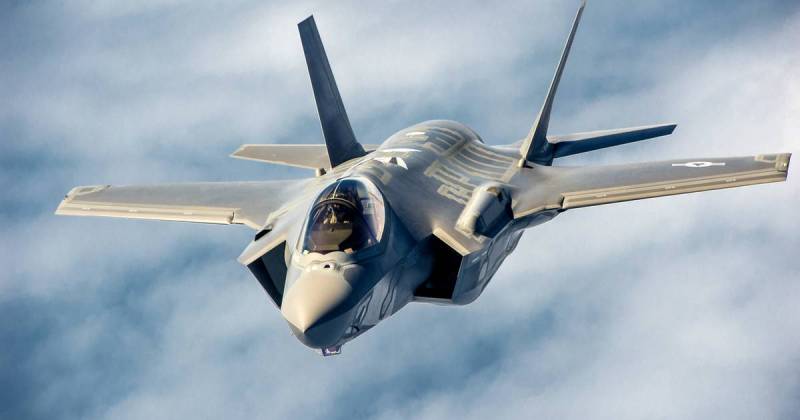
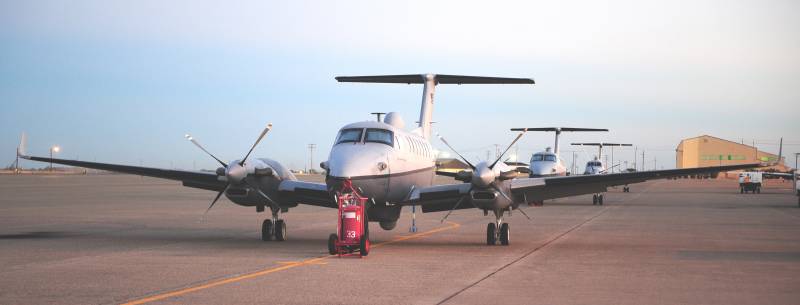
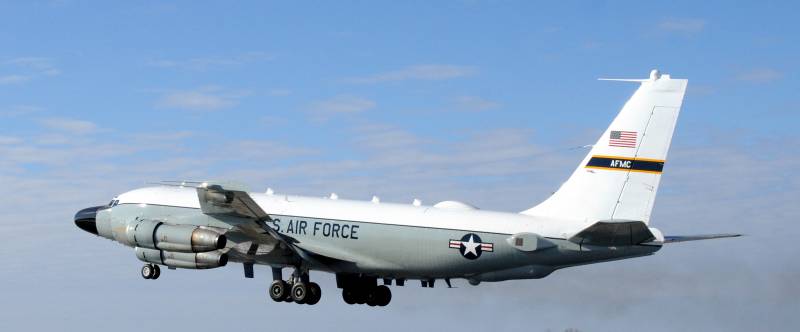

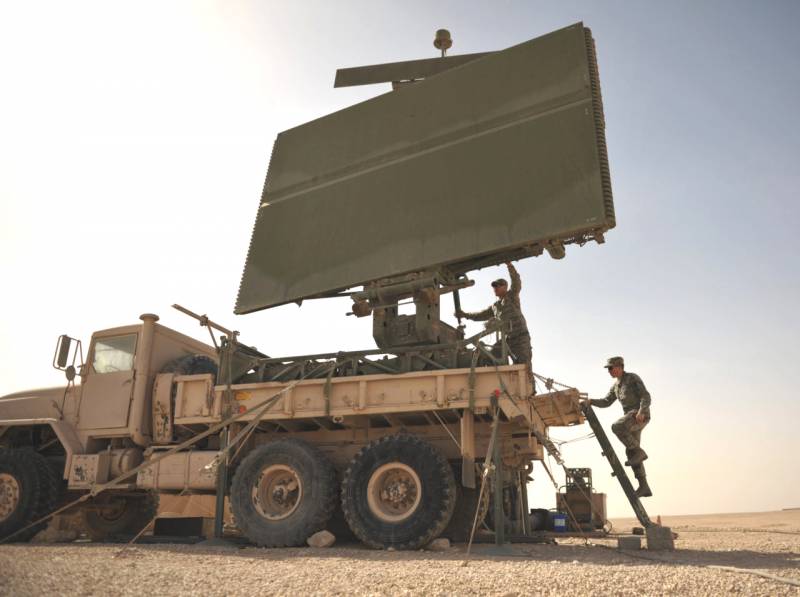
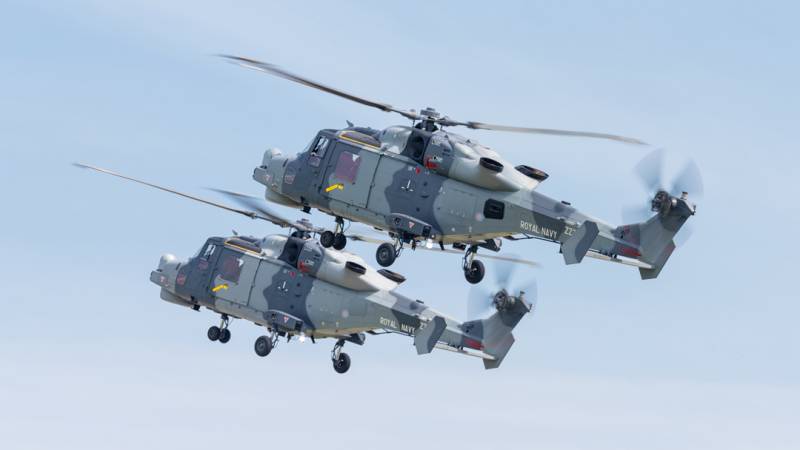
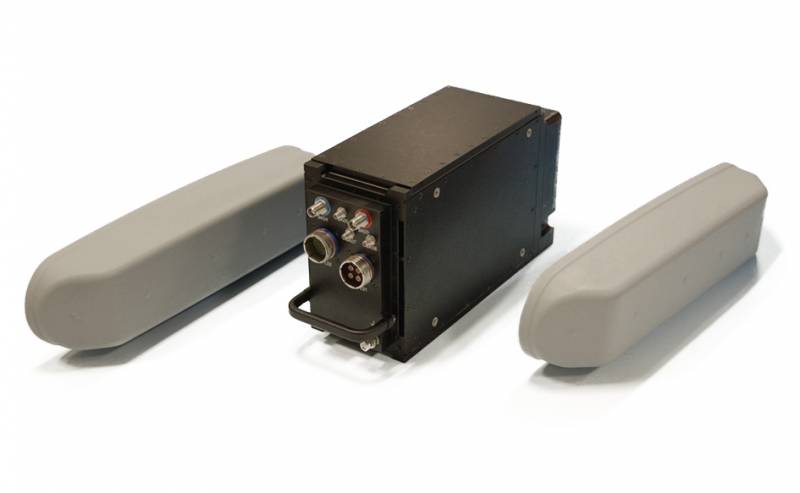
Information